Rabbi Chaim Moshe Levy, a Mesivta rebbe in Lakewood, New Jersey, knew it was coming, yet he still felt unprepared. In July, he received an overseas telephone call informing him that the time had come to take over the pulpit of his deceased father, Rabbi Daniel Levy, zt”l, as the Rav of I.R.G. (Khal Adas Yeshurun) in Zurich, Switzerland.

2006 Kashrus Training Seminar
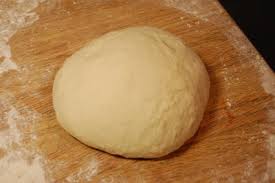
When You Need to Knead: A Guide to Hafrashas Challah
Kashrus Kurrents Fall 2004 | Updated June 2024
[For a related article about the halachos of hafrashas challah for gluten-free blends, whole wheat flour, sourdough and at challah bakes, click here.]
One of the many ways Klal Yisroel serves the Ribbono Shel Olam is through the performance of mitzvos hateluyos ba’aretz, mitzvos that are dependent on the Land of Israel. Those who live in Israel have many opportunities to fulfill these mitzvos. In chutz la’aretz, the mitzvah of hafrashas challah is one of the only agricultural mitzvos that we are obligated to perform.1
It is well known that this is one of the mitzvos performed preferentially by women. Furthermore, one honors the Shabbos by baking and being mafrish challah on Erev Shabbos.2
The following are halachic guidelines based on the psak of Rabbi Moshe Heinemann shlit”a.3
A. Products
Products kneaded from chameishes minei dagan (wheat, spelt, barley, oats, and rye) […]
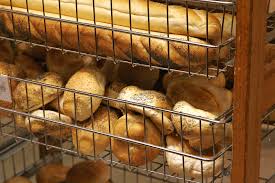
Pas or Pas Nisht: Reviewing the Laws of Pas Akum
Life is made up of a long chain of experiences. Some bitter, some sweet, some mundane, and some exciting. Let me share one with you. About ten years ago I had the good fortune to have an inspiring experience in Morocco, of all places. The purpose of my trip was to inspect various Star-K companies that exported olives and olive oil to the U.S. The inspiration came as a result of spending two days with the remnant of the once thriving ancient Jewish community of Meknes. Meknes was home to many Rabbanim, Geonim, and Tzadikim. The Ohr Hachaim HaKodosh, the great luminary who wrote the famous commentary on Chumash, was born in Meknes. The Jewish cemetery dates back 1200 years. Today barely two hundred families remain. The Rav of the small kehilla is a holy Jew by the name of Rabbi Chaim Kasous, who had served […]

Pas Habah B’Kisnin Chart
I. Varieties and circumstances that warrant a Birchas Hamotzi:
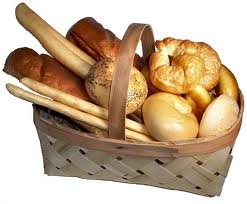
Pas Habah B’Kisnin: Pas or Pas Nisht
Spring 2005 | Updated August 2013
…Sora spent the whole morning shopping and was ready to stop for lunch. She was in luck. The kosher pizza shop was down the block from the mall. Since she was watching her weight she did not want to indulge, so she ordered one slice, salad and a diet soda. As she carried her order to her seat, she was faced with a dilemma: which brocha (blessing) should she make – mezonos or hamotzi?
…It was a beautiful wedding with a magnificent stand up smorgasbord. Naturally, the guests lined the carving tables to indulge in delicious corned beef. The glatt[...] Read More

Me’ein Olam Habah, Instant Style: Instant Foods in the Kosher Home
August 2013
(Click here for a helpful Glossary of Terms used in this article.)
Our fast paced lifestyles have opened a market for easy to prepare and pre-cooked types of foods. Ready to eat, heat-and-serve or just add boiling water. Packaging labels proclaim that you can have that old fashioned home cooked flavor in only a fraction of the time. For the kosher consumer there are a variety of concerns that present themselves when using these quick to prepare concoctions. As can be expected, the less you have to do at home to prepare, the more that has been done at the factory to make the food edible. Therefore, one must be sure that the product has reliable kosher certification.
One must also be cautious as well when using these processed foods on Shabbos. As a rule, when dealing with raw foods, the Shabbos […]

HOT OFF THE HOTLINE: Kosher is Healthier
“Do you really know what Kosher means?”
“I think so.”
“Fine, so tell me, what is Kosher?”
“Kosher means that the food is clean and healthy.”
“No, Kosher means that the food production was blessed by a Rabbi.”

FOOD FIT FOR A KING: Reviewing the Laws of Bishul Akum & Bishul Yisroel
It is not uncommon for food manufacturers to call us with a keen interest in kosher certification but who don’t have the slightest idea what it takes to produce a kosher product. What complicates matters is that they would like to have a kashrus tutorial capsulized into a telephone conversation. Obviously, we can’t give a thorough kashrus course over the phone, but we can categorize practical kashrus into three main areas: ingredients, equipment, and process.

Cholov Yisroel: Does a Neshama Good
There is a general rule in Halacha, Jewish Law, governing natural derivatives from Kosher and non-Kosher animals. Kol hayotzei min hatahor tahor, vichol hayotzei min hatamei tamei. Derivatives from a Kosher species are Kosher, while derivatives from a non-Kosher species are not. Therefore, milk produced by Kosher mammals, such as cows, goats, and sheep, are considered Kosher, while milk from non-Kosher mammals, such as horses, pigs, camels, or whales, are forbidden.

A Mashgiach’s Job is Never Done
David Mitnick, Star-K Mashgiach
The world of Kashrus is exciting, stressful, and always a challenge for a Mashgiach. Changes in product certification, facility protocol, and current events, in addition to a working knowledge of Kashrus, are items in which every Mashgiach must be well-versed to be a powerful player in any kitchen. The role of the Mashgiach, once typecast as that of an old man with a white beard sitting on a chair, has changed. Not only does the Mashgiach need to know to keep dairy and meat separate, the “new-age” Mashgiach must relate to the kitchen and serving staff with diplomacy and grace in order to be a respected member of the team.
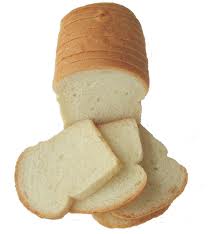
The Rise and Fall of Wonder Bread
Published Spring 2013
It has been called the staff of life. “Lechem” (bread) makes a quick cameo appearance for posterity, when the Ribbono Shel Olam charts the course of mankind for time immemorial by punishing Adam HaRrishon with the words, “Bezaias apecha tochal lechem”,1 “You will eat bread by the sweat of your brow.” Of course, it is obvious to everyone – both young and old- that lechem means bread!

“-ASE” לכל חפץ
Published Spring 2013
In the course of his daily routine, a mashgiach deals with dozens-if not hundreds-of food ingredients. In the arcane world of modern food technology, terms like “enzymes”, “substrates”, “emulsifiers”, “stabilizers”, and “surfactants” lend some technical significance. But, in the real world one may ask, “What has an enzyme done for me lately?” This article will address some of the direct applications of enzymes in our diet.

STAR-K Tevilas Keilim Chart
Kashrus Kurrents Summer 2015 | Updated March 2024
(ORIGINALLY PUBLISHED AS: A Practical Guide to Tevilas Keilim)
For a summary of the halachos involved, refer to Tevilas Keilim: Basic Guidelines.
UTENSIL
NEED FOR TEVILA – WITH OR WITHOUT A BRACHA
Aluminum Pan, Disposable
Tevila without a bracha if intended to be used only once; tevila with a bracha if intended to be used more than once.[1]
Aluminum Pan, Non-disposable
Tevila with a bracha[2]
Apple Corer (metal)
Tevila with a bracha
Baking/Cookie Sheet
Tevila with a bracha
Barbeque Grill
Racks require tevila with a bracha, other components do not require tevila.
Blech
No tevila
Blender/Mixer
Glass or metal bowl, metal blades and other attachments require tevila with a bracha, other components do not require tevila. Handheld immersion blender requires tevila with a bracha.
Bottle (metal or glass)
Tevila with a bracha. If bought filled with food and subsequently emptied by a Jew, does not require tevila.[3]
Brush (grill, egg yolk, pastry)
No tevila
Cake Plate (metal or glass)
Plate needs tevila with a bracha, cake plate cover does not require tevila.
Can (metal or glass)
Tevila with a bracha. If bought filled with food and subsequently emptied by […]
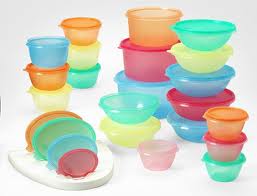
The Story Behind Kosher Plastics
Until about two years ago kashrus organizations paid little attention to the kosher status of packaging materials used to contain food prepared even under the most stringent supervision. Therefore, it was quite probable that a can of soup —- made up of ingredients without even a trace of anything nonkosher, prepared on completely kosherized equipment, and where the water from the steam system having been previously used to cook cans containing nonkosher products, was completely drained —- was packaged and cooked in a steel can coated with a tallow based butyl stearate oil (BSO)! Fortunately, due to the efforts of Rabbi Jonah Gewirtz, Chairman of CSPT, working together with the Circle U and the Star-K, we were successful in having every major steel company in this country that produces steel for use in food packaging switch to a vegetable based BSO. Similarly, other lubricants and finishing […]

A Crystal-Clear Halachic Approach to Glass
Glass is one of nature’s most versatile products created from some of nature’s most prevalent raw materials: sand, soda and lime. In the food industry glass applications are extremely diverse. Glass can be made into delicate drinking glasses as well as tough heat resistant ceramic cook tops withstanding temperatures over 1000°F.

Terumos and Ma’asros
Published Spring 2002 | Updated August 2024
Eretz Yisroel has the unique privilege of being the recipient of the Ribono Shel Olam’s brachos throughout the year. Its agricultural industry continues to grow and flourish. Consumer products from Israel that are exported to the American marketplace include Jaffa oranges, grapefruits, pomelos, clementines, carrots, parsley, Carmel and canned tomatoes, peppers, candies, jams, jellies, olives and pickled products. Industrial products used for manufacturing include tomato sauce, tomato paste, orange oil, lemon oil and spices.
Besides for all the ingredients and processing concerns which confront the kosher consumer, additional kashrus requirements apply to foods grown, produced or imported from Israel. A consumer must be sure that terumos and ma’asros have been properly separated before eating, and that the fruits do not come from trees that are orla or neta revai or shemita.
What Are Terumos and Ma’asros?
Terumos (literally, separations) and ma’asros (literally, a tenth) were compulsory […]

Charting the Course of Orla
Published Summer 2013
When a tourist comes to Israel from the Diaspora one of the things he has to get used to is the mitzvos hatluot b’aretz, the mitzvos that are unique to Israel. After he gets through taking trumah and maaser, tithing, and makes sure he doesn’t come during shmitta (beware next year!) he is suddenly hit with orla. And when he asks how to cope with this unfamiliar problem he is sometimes given a chart with a list of fruits and orla percentages which, if he isn’t totally confused, the charts will certainly finish off the job. “What do all these percentages mean? And why,” he asks, “can’t someone give me a yes or no answer instead of these percentages?” So what do the percentages on these fruit charts mean?
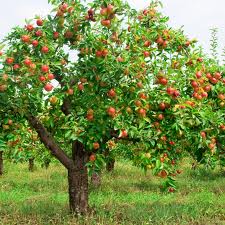
A Halachic Exercise in self control
Published Summer 2013
SCENE 1: You are hungry. You desperately need something to hit the spot. Suddenly your friend offers you a delicious chocolate frosted cupcake . . . complete with sprinkles. Your mouth begins to water . . . you are just about to take that first irresistible bite when your inner voice raises the age-old query, “How do you know if it is Kosher?” Your ecstasy is short lived. Your hand pulls back and you put the cupcake down. You exercised self control. You are still hungry but you passed the test.
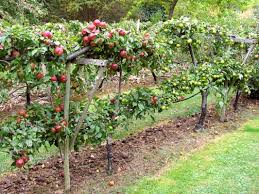
OTZER BAIS DIN: Proper Distribution of Shmitta Produce
Rav Aharon Tendler, Ner Israel Mechina High School
Our rabbis have taught that if the Jewish nation would observe two Shabbosos, they would be immediately redeemed1. Generally, this is understood to mean that the redemption will come if we observe two consecutive Shabbosos. The question arises as to the significance of two Shabbosos, and many responses have been provided. There is a beautiful answer offered by the former Chief Rabbi of Moscow, Rabbi Fishman, in his introduction to a commentary on the Yerushalmi Mesechta Shevi’is. Rabbi Fishman maintains that the two Shabbosos actually refer to the seventh day of the week when we refrain from all melacha, constructive work, and the seventh year of shmitta, when we withdraw our ownership from the land of Israel and declare all produce ownerless and available for all to take.
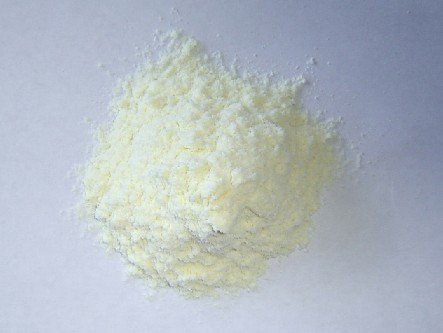
The Kosher Formula
The Jewish people, the am hanifchar, the chosen people, have been faithful to the Torah’s commandments for thousands of years. Of those commandments, Kashrus has served as an anchor of the Jew to his G-d, ensuring that even in the most mundane of life’s requirements, one is always cognizant of the source of one’s subsistence. Our Rabbis also teach us that there is a mystical relationship between the foods we eat and our spiritual well being.
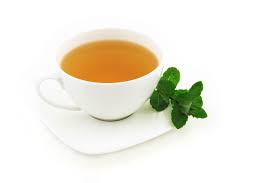
The Kashrus of Tea – With No Strings Attached!
Published Summer 2013
Americans, generally, do not drink as much tea as the rest of world. This may have something to do with a certain party they had in Boston a while back. That being the case, you might be surprised to learn that tea is second only to water in worldwide beverage consumption. In fact, some estimates place tea consumption in the billions of cups daily. That’s a lot of tea. However, with recent health benefits being ascribed to tea, its popularity in this country is definitely on the rise. In this article we will explore the world of tea and what questions there are vis-à-vis kashrus and halacha. First, a little background is in order.
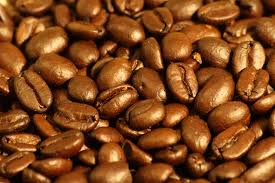
Knowing Your Beans: The Kashrus of Coffee
Bedouins savor it thick and rich out of small ornate cups. Some like it black, while others must have cream and sugar. The adventurous will try one of the many flavored coffees available, while the purist would not hear of it. No matter how you enjoy it, coffee remains one of the most popular beverages on the planet. The per capita consumption of coffee in the U.S. alone approaches 30 gallons a year.

Kashrus in High Spirits
Winter 2005
Jewish life-cycle events, be it a bris, a bar mitzvah, or a wedding, are special occasions that we anticipate eagerly and celebrate with joy. At any simcha, we fill our cups with wine, raise our glasses of schnapps, and with great fervor pronounce a resounding “L’chaim!” in honor of the blessed event. This custom of melding alcohol with simcha has been a Jewish practice from time immemorial. The cup that is raised today, however, bears very little resemblance to that of yesteryear.
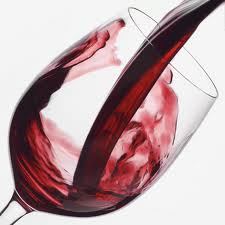
The Art of Kosher Wine Making
In the Torah’s eye, nature’s quintessential beverage is “the fruit of the vine,” grape wine. Our Sages tell us of wine’s importance throughout the calendar year and throughout the Jewish life cycle. The Jewish People sanctifies Shabbos or Yom Tov over wine. At the Pesach Seder we express the four expressions of Geulah (freedom) over wine. One recites Sheva Brachos at a wedding over wine. A special Bracha was established by our Sages especially for wine, “Borei Pri HaGafen “ .

Kashering Liver
Before one is permitted to indulge in kosher Jewish delicacies such as chopped liver, liver steaks and onions, or sauteed chicken livers, raw liver must undergo various processes before the liver is deemed fit for kosher use. Firstly, as with all kosher meat, the liver must come from a kosher species of animal or fowl that has been schechted, slaughtered, in the proper manner prescribed by the Torah. If it is an animal liver, all the fats must be meticulously removed. Furthermore, the Torah forbids eating the blood of an animal or bird, therefore, it is necessary to extract the blood from the kosher slaughtered meat or liver.

It’s a Siman that it’s Kosher: Avoiding Bosor Shenisalaim Min Hoayin
An Interview With Rabbi Moshe Heinemann
STAR-K Rabbinic Administrator
INTRODUCTION:
The world of kashrus has played, and continues to play, a dominant role in the life of a Jew and the life blood of Judaism. This centrality is evidenced by the significant halachic treatment of kashrus in the Shulchan Aruch, by our Poskim, and in contemporary Torah journals, as well as the particular attention paid to the kosher consumer stretching from the aisles of the supermarket to the media portfolios of the marketplace.

Facts on Wax: Are Vegetables and Fruit Waxes Kosher?
August 2013 | Updated May 2024
You may notice at your favorite supermarket the following statement next to the prominent “Summer Fruits from California” banner: “Coated with food grade vegetable, petroleum, and/or shellac-based wax or resin to maintain freshness” on their favorite fruits and vegetables. What are waxes? Are there any kashrus concerns? Let us examine some of the kosher facts on wax.
Waxes are not a new phenomenon, as they have been used domestically for over sixty years on a wide variety of fruits and vegetables (see list below). Waxes are derived from a variety of sources and are a cross combination of natural and synthetic ingredients. The most common primary wax ingredients are shellac, carnauba wax or petroleum-based wax. Less frequently used and more costly wax bases include beeswax and candelilla wax.
Shellac (Lac Resin)
Shellac or lac resin is a product that is imported from India and used in waxes for citrus […]

Star-K Certified Canned Vegetables
(The following list of certified canned vegetables are certified kosher only when bearing the Star-K symbol)
Aegean Gourmet
Finesse
Ningbo Orient Jiuzhou
Sysco
Agro Dutch
Foodtown
Noam Gourmet
Sysco Arrezzio
Alessi
Freshlike
Olympion
Sysco Classic
Allens
Fronte
Pacific Delite
Sysco Imperial
Alma
GFS
Pathmark
Taco Mac
Ambrosia
Gandules
Pocahontas
Taylor
America’s Choice
Geisha
Popeye
Tongfa
American Roland
Georgia Belle
Premium
Tops
Ashley
Giant
Princella
Trappey’s
Assagio Classico
Gold Plum
Red Feather
Tuna Delight
B-Tam
Great Value
Red Rooster
Tyling
Bellagio
Guiguo
Reese
U.S. Blue
Benz’s Bilo
Happy Chef
Restaurant Row
U.S. Food Service Roseli
Bountiful Harvest
Harvest Valu
Roland
U.S. Red
Brown Beauty
Herko
Royal Prince
Uncle Williams
Bruce’s
Homefolks
Royalty
Ungers
Butterfield
Horn of Plenty
Ruby
Veg-All
California Delight
Inter-Food
Rykoff Sexton Green
Vigo
Casa Diva
Jeraci
San Pablo
Vitarroz
Casa Fiesta
Jinke
Santa Lucia
Viva Mexico
Chai-Kee
La Romanella
Saruhan
Vivaci
Chopsie’s
Lijiang
Selena
Wegman’s Whyte’s
Classic/Arrezzio
Louisiana
Smart & Final
Wolco
Conservas Martinez Garcia
Mancini
Snack Delite
Yarden
Crest Top
Manolito
Southern Home
Yilong
D&S
Marco Polo
Stone Mountain
Zumdieck
Del Destino
Marcove
Stop & Shop
Dintel
Mexene
Sugary Sam
Dorman
Milfiore
Sun of Italy
Dunbars
Mistral
Sunfield
East Texas Fair
Monte Lupo
Sunshine
Eden
Montecito
Super G
El Rio
Moody Dunbar
Supremo Italiano
Empress
Natural Value
Sylvia’s

Can it be Kosher
How often have we heard the query, “What’s the problem with plain canned vegetables? It’s only vegetables, water and salt in a can!” True. It’s also true that today you can buy vegetables with a hechsher, salt with a hechsher, water with a hechsher even cans with a hechsher! But does 1 + 1 + 1 + 1 = 4? Can a kosher consumer buy canned corn off the shelf or should the kosher consumer beware?
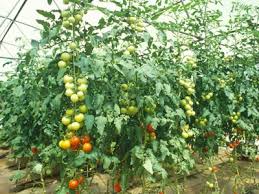
Hydroponics
The AeroGarden is a unique hydroponic system, enabling home-growing of vegetables. ( Note: STAR-K no longer certifies The Aerogarden) The entrance of this system into the marketplace presents an opportunity to discuss the history and halachos of hydroponics.

 STAR-D
STAR-D STAR-S
STAR-S